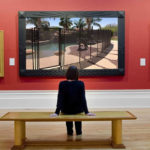It’s no surprise that in sunny California, there are hundreds of thousands of swimming pools throughout the state. The weather in Southern California is prime for swimming almost year round in some parts. Therefore, residential pools are found in the backyards of many homes in San Diego, Los Angeles, and nearby cities. However, with pools, comes safety concerns. And where there’s concerns, you better believe the folks in California have a law, rule, or regulation to address that concern. Whether or not Californians, in general, are overly cautious, or misguided, they managed to get this one right. That is, enforcing laws that require pool owners to install pool safety fences to protect young children from drowning incidents. A leading cause of child deaths are the result of drownings. The majority of these horrific incidents occur in residential pools without a pool barrier protecting the child from the water. These CA laws have been put in place to protect children. But also know that a lot of thought has gone into these guidelines and they should be followed regardless of any pool fence laws being enforced or not. If you want to ensure you’re compliant with the safety pool fence laws in your Los Angeles home, review the information below.
San Diego Pool Fence Rules »
Los Angeles Pool Barrier Laws »
California Department of Child Safety »
San Diego Pool Fence Rules
| Category | Pool Fence Law / Regulation |
| Height | Minimum height of 60 inches (5 feet) |
| Gates | Gates shall open away from the swimming pool. – Gates shall be self-closing with a self-latching device located a minimum of 54 inches from the bottom of the gate. -Fence gates shall provide access for emergency personnel |
| Gate Latch | Where the release mechanism of the self-latching device is located less than 54 inches from the bottom of the gate, the release mechanism shall be located on the pool side of the enclosure at least three inches below the top of the gate and the gate and enclosure shall have no opening greater than ½ inch within 18 inches of the release mechanism |
| Openings | Maximum vertical clearance from the ground to the bottom of the enclosure shall be two inches. The maximum vertical clearance at the bottom of the enclosure may be increased to four inches when the grade is a solid surface such as a concrete deck or when the enclosure is mounted on the top of the above-ground pool structure. Gaps or voids, if any, shall not allow passage of a sphere equal to or greater than 1 ¾ inches in diameter. For fencing composed of vertical and horizontal members, the spacing between vertical members may be increased up to four inches when the distance between the tops of horizontal members is 45 inches or more. |
| Climbing | Enclosures shall have an outside surface free of protrusions, cavities or other physical characteristics that would serve as handholds or footholds that could enable a child below the age of five years to climb over |
| Pools shall be separated from neighboring properties by an enclosure described above AND shall be equipped with at least ONE of the following safety features | |
| Pool Covers | The pool shall be equipped with an electrically operated approved safety pool cover that can be opened or closed with a single switch placed at least 54 inches above the ground. |
| Alarm System | The residence shall be equipped with an exit alarm on each door providing direct access to the pool. The alarm system shall: – sound continuously for a minimum of 30 seconds, within seven seconds after the door and its screen, if present, are opened – be capable of providing a sound pressure level of not less than 85 B when measured indoors at a distance of 10 feet from the alarm – automatically reset under all conditions – be equipped with a manual means, such as a touchpad or switch, placed no lower than 54 inches above the floor, to temporarily deactivate the alarm for a single opening, but the alarm shall not be equipped with an on/off switch and deactivation shall be for no more than 15 seconds |
| Doors | All doors providing direct access from the home to the swimming pool shall be equipped with a self-closing, self-latching device with a release mechanism placed no lower than 54 inches above the floor. The home shall also have a minimum of one exit door that does no provide direct access to the swimming pool and that complies with exit door regulations |
source: https://www.sandiegocounty.gov/pds/docs/pds379.pdf
Los Angeles Pool Barrier Laws
| Category | Pool Fence Law / Regulation |
| Location | A. The pool enclosure shall be constructed around the pool, except when approved by building official. B. Stairways, ramps, and landings for slides or similar pool features shall have handrails and/or guardrails when they are 30” above adjacent grade |
| Height | The top of the pool enclosure shall be at least 5 feet (60 inches) above grade. The height shall be measured from the side away from the pool. |
| Clearance | Maximum vertical clearance between grade and the bottom of the barrier shall be 2 inches above earth. Maximum vertical clearance between solid surface (concrete deck) and the bottom of the barrier shall not allow a passage of a sphere 4 inches in diameter. |
| Climbing | Any decorative design work on the side away from the pool, such as protrusions, indentations, or cutouts, which render the pool enclosure easily climbable, is prohibited. |
| Openings | Gaps or voids, if any, shall not allow passage of a sphere 4 inches in diameter. F. Horizontal members that create a “ladder” affect are prohibited unless stated otherwise below. |
| Gates | 1. Pedestrian walkway access gates shall be part of the pool enclosure and shall meet all the construction requirements. The gate shall be self-closing and self-latching. 3. The gate shall open or swing away from the pool 4. The release mechanism of the self-latching device shall not be located less than 60 inches from the bottom of the gate. 5. The following doors and gates are prohibited as part of the pool enclosure due to intrinsic problems with self-closing or self-latching devices: a. Double doors or pairs of gates. b. Doors or gates wider than 4 feet. c. Driveway gates. d. Overhead garage doors. 6. Additional locking devices, hooks or bolts may be installed for security of the premises, provided normal satisfactory operation of the required self-closing and self-latching systems is maintained. |
| Construction Materials | |
| Chain Link | 1. The wire for the chain link shall not be less than 11-gauge. 2. The posts shall be galvanized pipe at least 1-1/4 inch in diameter and spaced not more than 10 feet apart. 3. The posts shall be set not less than 12 inches into concrete. The concrete shall be poured into a hole minimum 6 inches in diameter and minimum 18 inches deep. 4. Openings in the chain link shall not be greater than 1-3/4 inches measured horizontally. |
| Solid Wood | 1. Redwood or pressure treated posts shall be no less than 3 inches by 3 inches, set no more than 10 feet apart, and embedded at least 18 inches in the ground. 2. The vertical boards at least 1/2-inch thick shall be placed side-by-side without any gaps or spaces. 3. The vertical boards shall be securely fastened to no less than two horizontal rails that are at least 2 inches by 3 inches in cross section. 4. The horizontal rails shall be located on the pool side of the fence and more than 48 inches apart. |
| Masonry/Concrete | 1. Masonry fences shall be supported on a foundation of concrete extending not less than 12 inches below grade, not less than 12 inches in width, and not less than six inches in thickness. 2. Reinforcing steel located in the masonry wall, when required, shall be embedded 16 diameters into the footing. |
| Wrought Iron | 1. When the vertical members are spaced 1-3/4 inches maximum, then the horizontal members shall be located on the inside face of the fence, or 2. The distance between the tops of horizontal members shall not be less than 45 inches |
| Combination of material | Different materials used in the horizontal direction shall be permitted, provided each portion of the pool enclosure meets the requirements of this section. Different materials used in the vertical direction (one-on-top of another) shall be prohibited, unless approved by the building official |
California Department of Child Safety
| Category | Pool Fence Law / Regulation |
| General Accessibility | All homes that accept children under 10 years of age or a child that has a condition including one that makes the child developmentally disabled, or mentally handicapped, and for whom special care and supervision is required as result of his/her condition, shall ensure the inaccessibility of pools, including swimming pools (in-ground and above-ground), fixed-in-place wading pools, hot tubs, spas, fish ponds, and similar bodies of water |
| Visibility | The pool shall be isolated from access to a home by an enclosure that does not obscure the view from pool. |
| Gate | Any access gates through the enclosure open away from the swimming pool, and are self-closing with a self-latching device placed no lower than 60 inches above the ground. |
| Height | A minimum height of 5 feet (60 inches.) |
| Clearance | A maximum vertical clearance from the ground to the bottom of the enclosure of two inches. |
| Openings | Gaps of voids, if any, do not allow passage of a sphere equal or greater than four inches in diameter. |
| Climbing | An outside surface free of protrusions, cavities, or other physical characteristics that would serve as handholds or footholds that could enable a child below the age of five years to climb over. |
| Windows | All windows providing direct access from the home to the swimming pool shall be secured so that they cannot open more than 4 inches, however, if they are sleeping rooms, they must use an exit alarm |
| Pool Cover | Approved safety pool cover” means a manually or power-operated safety pool cover that meets all of the performance standards. |
source: https://dcfs.co.la.ca.us/Policy/FYI/2003/FYI%2003-60RegsAttchmnt.doc


